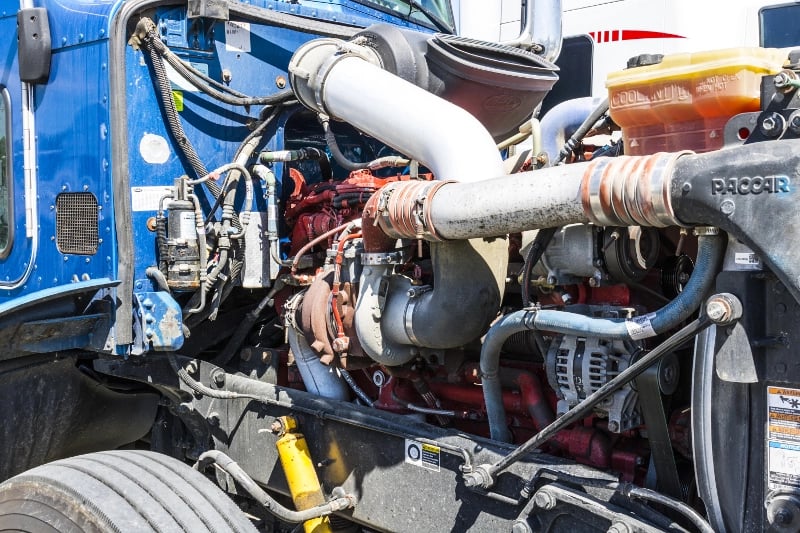
Semi trucks need a huge amount of torque to move their 80,000 lb+ loads. Being able to move these loads across the country, up mountains and off-road in fields requires a lot of force. Many times, the torque needed is more than what the trucks engine can put out on its own. This is why most trucks come equipped with turbochargers.
What is boost pressure?
Turbochargers compress the air pushed into the engine's cylinder, which allows more fuel into the engine to produce a more intense combustion for more torque. This extra pressure produced by the turbocharger is known at boost pressure and it's an important component to watch to make sure it is always producing the right pressure.
How does boost pressure work?
An engine requires 3 ingredients in order to work effectively. It needs fuel, oxygen and an ignition source. When the pistons crank, they produce pressure inside the cylinders with the fuel and oxygen mixture. The pressure causes ignition, producing combustion. This is what cranks the driveshaft and gets turned into torque to move the truck.
If a truck relied solely on its engine to move its load it would require a bigger engine block that would be heavier and less efficient on fuel. This is where the turbochargers come in. Turbochargers help force more air and fuel into the engine of a smaller size. More oxygen allows the fuel to burn more completely to produce more energy. This additional energy is turned into more torque. This helps keep the engine size smaller, increases fuel economy, and produces more power.
What can happen if boost pressure is low?
There are a couple situations that would cause your boost pressure to drop. Most of the time there is an air leak in the line that can be easily fixed by changing the line out or tightening clamps. There could also be a clog in your exhaust that is keeping air from escaping and building up pressure in the exhaust itself.
When your boost pressure is low it can have many negative effects on your truck. You will notice that the truck does not pull as hard as expected. Over time you will notice things like:
- The truck is having a harder time climbing hills
- You MPG will go down and you need to refuel more regularly
- There is more smoke than usual coming from the exhaust
- There is a delayed throttle response
When the engine is getting less pressure from the turbocharger it means the engine is getting less oxygen that it can use for combustion. The unburned fuel is seen by the black smoke that comes from the exhaust. Unburned fuel means lower fuel economy. This can also cause build-up of particulate matter in the exhaust pipes that creates clogging and further lowers boost pressure leading to the worsening effects.
If left untreated the problems can build up and completely damage the turbocharger itself. If you notice that your boost pressure is lower than normal, and you are experiencing lower performance from your truck, you should address this sooner rather than later.
What can happen if boost pressure is high?
If you notice that your boost pressure is higher than normal this can be a really bad situation. Too much pressure can cause significant damage to the turbocharger or engine. If you are pumping in too much fuel and air into an engine it can exceed what the engine is built to withstand and cause a blown head gasket.
Typically, turbochargers will not be spec'd to be able to produce more pressure than is needed for the engine. This would most likely be caused by an aftermarket turbocharger.
How to avoid problems from bad boost pressure?
If you own a fleet, then poor boost pressure can hurt your trucks' ability to make a profit. If drivers are not trained to bring attention to trucks suffering from bad boost pressure it can go unnoticed for a long time and cause compounding problems.
Making boost pressure a part of your preventative maintenance program is a good step in catching the problem early on. This can be incorporated in a driver's DVIR or pre-trip inspection requirements.
Some fleet tracking services, electronic logging devices and video telematics solutions may also be able to provide boost pressure readings remotely. Boost pressure is an item that is stored on a truck's CAN bus. These items can be collected and sent to a remote dashboard where administrators or maintenance teams can see a trucks current boost pressure in real time.

